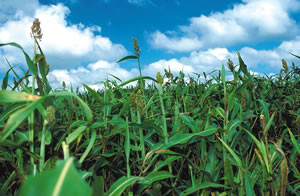SHARE:
Biofuels
Ethanol: Miracle or Mistake?
Florida is sinking millions into ethanol research and grants. But nobody is even close to making it profitable.

Reality Check |
USDA researcher Bill Widmer [“Starter Fuel,” May 2006, FloridaTrend.com] is among the few researchers who have developed reliable numbers on the cost. He has been working for four years at reducing the cost of turning citrus waste to ethanol, building off research dating to the early 1990s. Widmer, of the USDA’s agriculture research service citrus lab in Winter Haven, says that four years ago the enzymes needed to convert citrus waste to a fermentable sugar cost $12 to $15 per gallon, which would make $4-a-gallon gas a bargain. While he still has processing issues to resolve, he now has the enzyme cost down to just 80 to 90 cents per gallon. While that’s “still quite expensive,” he says, it has made citrus-waste ethanol “more than” price competitive with corn-based ethanol after the value of co-products such as limonene, which is used as a food additive and as a solvent, is included.
In theory, at least. Currently, citrus waste is made into animal feed. Now, just as the ethanol arithmetic has started to make economic sense, the rising price of corn has driven the price of animal feed upward, making citrus waste more attractive in the short term financially for growers to sell as a feed source. “We still have a ways to go in improving the economics for producing ethanol from citrus processing waste to prove there would be a clear advantage making the conversion (from animal feed production) to produce ethanol,” Widmer says.
|
Reality Check |
 |
Producing ethanol also can require copious water. At three gallons of water per gallon of ethanol — some methods require more — meeting the state’s ethanol quota with Florida-produced ethanol would translate into using an additional 2.5 billion gallons of water each year in a state already struggling with the demand on its water resources.
Some experts question ethanol’s green friendliness in other ways. Princeton University researcher Tim Searchinger touched off widespread biofuel skepticism earlier this year in a Science magazine study that looked at how growing crops for fuel drives changes in land use. Searchinger favors using waste products as fuel sources. But he says using citrus waste for ethanol could be a poor choice in terms of greenhouse gas emissions if it induces growers to cultivate untouched land to grow animal feed to replace the citrus waste.
 Reality Check |
Ingram, the UF researcher, would seem to have the solution for all. He says he hopes his cellulosic ethanol process will be not only water neutral, but also may generate water. His pilot refinery also will use a farming byproduct rather than a crop — sugar bagasse, the crushed sugar cane stalks left over after the sugar juice is extracted. (It later will use yard and wood waste, among other sources.)























